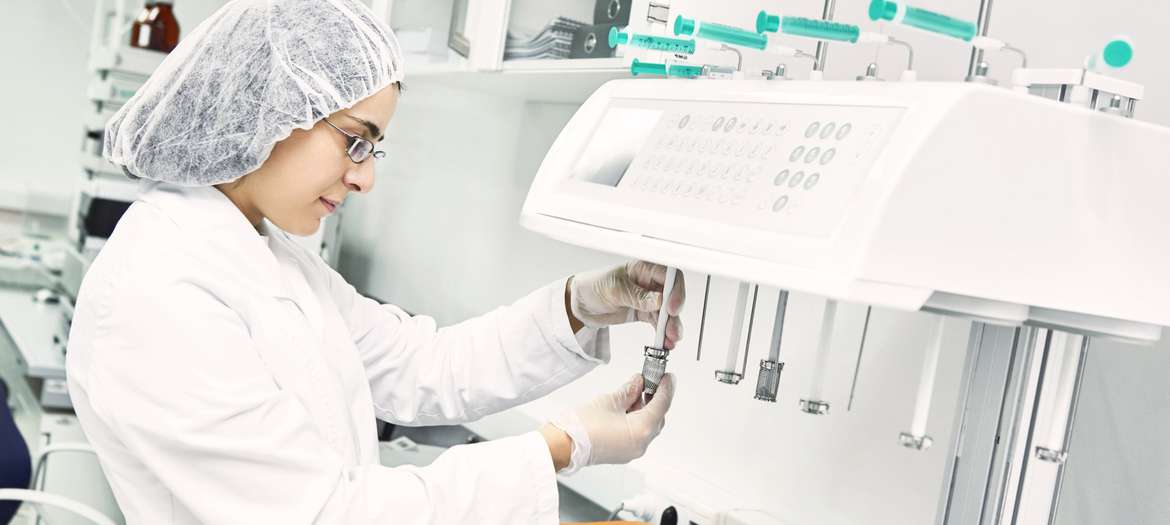Situtation:
Conversion of a fermenter for the production of enzymes and pharmaceutical excipients from a liquid-lubricated to a dry-running sealing system.
In the production of pharmaceutical excipients, where sealing fluids must be kept out of the production process and handling of the seal on the agitator shaft should be simple,it is worth switching to a dry-running sealing system.

Conversion of a fermenter for the production of enzymes and pharmaceutical excipients from a liquid-lubricated to a dry-running sealing system.
Exclusion of sealing fluids in the production of pharmaceutical excipients.
Fermenter upgrade to the dry-running agitator seal SeccoLip from EagleBurgmann.
In the production of pharmaceutical excipients, where sealing fluids must be kept out of the production process and handling of the seal on the agitator shaft should be simple,it is worth switching to a dry-running sealing system.
An international chemical and pharmaceutical company was one of the first manufacturers to switch to the dry-running SeccoLip seal from EagleBurgmann, which was first presented in 2018.
The fermenter for the production of enzymes and pharmaceutical excipients was previously equipped with a liquid-lubricated seal. This did function to the satisfaction of the operator, but the newly developed SccoLip promised greater convenience for handling and maintenance over the long term, thanks to the superior tolerance for shaft movements and the dry-running concept.
The strict safety requirements called for a barred seal design with three sealing lips. The seal is barred and flushed with nitrogen. The main advantage: The required supply system is easy to operate and monitor. Any potential contamination of the product with nitrogen is harmless – in contrast to liquid sealing media.
The seal was designed as a cartridge and installed at the top entry drive. The first sealing lip faces toward the product, the second faces outwards, and the third also faces the product.
This arrangement permits the connection of a flushing and barrier system. Nitrogen is flushed into the fermenter through the first lip. The barrier chamber between the second and the third lip is created with a connecting bore and prevents product constituents from reaching the atmosphere.
Continuous flushing with nitrogen is required because sticky foam can form around the seal, which would impair the proper sealing function. With the specially designed cleaning flange, the area in front of the seal can be regularly cleaned with steam.
The GSS4010-type combined barrier gas and flushing gas system from EagleBurgmann is installed in a stainless steel housing. The high-quality individual components are also made of stainless steel and are suitable for use in explosive environments classified as ATEX zone 1 and 2.
The seal is based on the patented SeccoLip technology. One special feature is the combination of two elements – the PTFE sealing lip and rolling bearing – in a single component. The rolling bearing adapts the entire sealing element to the shaft movements.
Because the lip and the rolling bearing are contained in a single element, the seal gap between the rotating shaft and the sealing lip remains nearly constant. Radial deflections of the agitator shaft are compensated directly and reliably. No compensation elements such as O-rings, expansion discs, or metal bellows are required for reliable functioning. The PTFE material satisfies the requirements of the FDA (U.S. Food and Drug Administration).
With this dry-running sealing solution, the fermenter has been upgraded to the state of the art. SeccoLip has been in use for several years now without any problems. Nitrogen leakage is minimal, and the time spent on inspecting and servicing the sealing system has decreased considerably.
Operating conditions
Would you like to learn more about what products & services we have to offer for the pharmaceutical industry? Find our more here. Or feel free to contact us.

Between June 2017 and March 2019 the Hengli Group constructed an integrated refining and chemical complex in the Chinese harbor town Dalian where 20 million tons of crude oil are processed every year. EagleBurgmann advised the company Hengli concerning the selection of mechanical seals and supply systems for the whole plant and supplied more than 95 % of the components in use.

In Great Britain, a shortage in natural gas supply has severe consequences: Since the country switched from coal-fired to gas-fired power stations, a gas supply shortage makes households and industrial consumers not only vulnerable to failing heating and gas stoves, but also to power outages. Companies along the value and transportation chain of natural gas are therefore especially dependent on reliable equipment.

Things get hot in rotary kilns, very hot in fact. In the production of cement, for example, the thermometer measures more than 1,000 degrees Celsius. Sealing systems from EagleBurgmann, a company of the Freudenberg Group and EKK, make sustainable contributions to environmental protection, energy efficiency and process reliability under these "fiery" high-temperature conditions.

Our modern civilization is quite literally built upon cement. Today, building materials made from cement are used in buildings, roads, bridges, dams etc. Cement production is a heat-intensive process and causes thermal expansion in duct systems. To compensate this, Indian cement producer Ramco Cement needed fabric expansion joints with a diameter of several meters for two of their plants. On the basis of a close collaboration, EagleBurgmann was able to design components that increase the efficiency of the plant in the long run.

Frequent starts and stops are a severe test for gas-lubricated compressor seals. Installed in an Argentinean combined cycle power plant is an EagleBurgmann supply system that provides a continuous gas flow rate for the seals and adapts it to changing conditions. Since then, the operational reliability of the compressors has increased significantly.

Seals are a risk factor in the production of liquid crystals. If there is even the slightest contamination of the liquid crystals, this will later affect the image quality of the display. Read on to see which sealing solution Merck KGaA uses in paddle dryers for the production of liquid crystals.